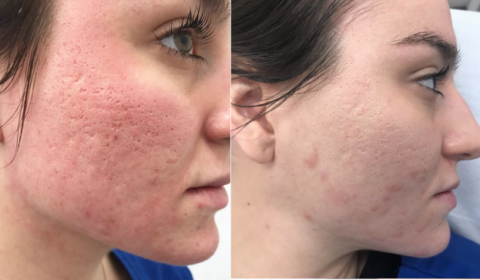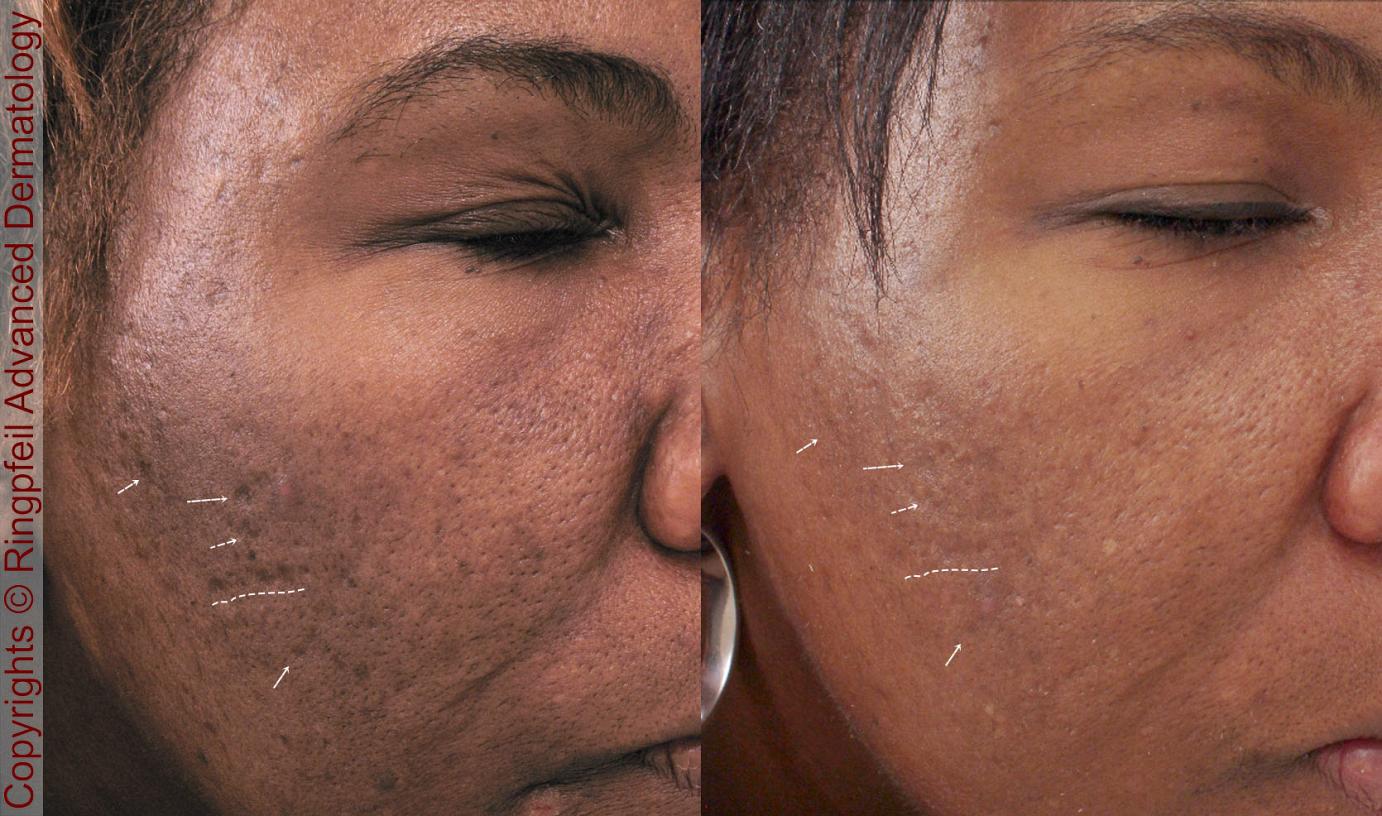Understanding the Numerous Skin Conditions and Effective Treatment Options for Acne Scars
Acne scars represent an intricate interplay of skin disease that dramatically impact individuals' self-confidence and general skin health and wellness. Understanding the distinct types of acne marks-- hypertrophic and atrophic-- along with their underlying causes, is critical for establishing reliable therapy approaches. Various therapeutic alternatives exist, ranging from innovative dermatological treatments to natural treatments. The efficiency of these therapies frequently hinges on tailored analyses by qualified professionals. As we discover the landscape of acne mark monitoring, it comes to be obvious that the trip towards more clear skin may involve greater than just topical remedies.
Kinds Of Acne Scars

On the other hand, hypertrophic marks arise from an overproduction of collagen throughout the healing procedure, resulting in raised locations on the skin. These scars are frequently solid and can differ in color, often showing up red or darker than the bordering skin.
Recognizing these kinds of acne scars is vital for establishing an effective treatment strategy - skin rejuvenation treatments. Options may consist of chemical peels, laser treatment, microneedling, or dermal fillers, customized to the particular scar kind. A thorough appointment with a dermatologist can help identify the most appropriate treatment, considering the individual's skin type, mark intensity, and total skin wellness
Causes of Acne Scarring
Scarring occurs as a result of the body's all-natural healing feedback to inflammation and injury brought on by acne lesions. When acne types, it sets off an inflammatory reaction, bring about the launch of various cytokines and development aspects that promote recovery. This procedure can in some cases lead to excessive cells formation or insufficient repair work, resulting in scars.
The key root causes of acne scarring consist of the severity of the acne itself, duration of the sores, and private skin types. Serious inflammatory acne, such as nodules and cysts, is most likely to cause scarring because of deeper tissue damage. In addition, incorrect handling of acne sores, such as choosing or pressing, can worsen tissue injury and inflammation, boosting the probability of scarring.
Hereditary proneness additionally plays a considerable duty; people with a household history of scarring are at a greater threat. Skin type and color can affect mark development, as darker skin tones might experience post-inflammatory hyperpigmentation, while lighter skin might establish atrophic marks.
Eventually, recognizing these reasons is vital in managing acne and reducing the possibility for scarring.

Therapy Choices for Scarring
Effective treatment options for acne scarring vary depending on the kind and intensity of the marks. Normally classified into atrophic, hypertrophic, and keloid marks, these conditions need tailored approaches for optimum results.
For atrophic scars, which are identified by a loss click now of cells, therapies such as chemical peels, microdermabrasion, and laser treatment are commonly employed. These techniques advertise skin revival and stimulate collagen production, therefore improving skin appearance. Subcision, a minimally invasive treatment, can also work by breaking up coarse bands beneath the skin.
Keloid and hypertrophic scars can be a lot more challenging to treat. Alternatives consist of corticosteroid shots to minimize swelling and flatten the scars. In some situations, cryotherapy or laser treatment may be suggested to minimize their look.
Surgical alternatives are available for extreme scarring, where excision or skin grafting may be essential. It's crucial for individuals to seek advice from with a skin doctor to assess their certain scar kind and talk about one of the most ideal treatment plan. Incorporating numerous treatments frequently yields the ideal results, making sure that each patient's special skin problem is resolved effectively.
Natural Remedy and All-natural Solutions
All-natural services and natural remedy can give an easily accessible strategy for people seeking to improve the appearance of acne marks (acne scars treatment). Numerous ingredients found in the home cooking area have actually shown possible advantages in boosting skin appearance and advertising recovery

An additional efficient option is lemon juice, which functions as a natural exfoliant and can lighten hyperpigmentation. It should be made use of very carefully, as it may create photosensitivity. Oat meal masks are likewise advantageous; their gentle peeling can help get rid of dead skin cells while calming irritability.
Essential oils, such as tea tree oil and lavender oil, can even more support scar recovery because of their antimicrobial residential properties. It is important to perform a patch examination before applying any kind of remedy to make certain there are no unfavorable responses. These natural remedies can be a complementary strategy in the journey to reduce acne marks.
Stopping Future Scarring
Adopting an aggressive approach to skin care can significantly minimize the threat of find more information developing future acne scars. Among the vital strategies is to handle acne properly as it occurs. This includes making use of non-comedogenic skincare products and medicines suggested by dermatologists that target acne without irritating the skin. Routine cleaning, peeling, and hydration can help preserve skin wellness and prevent blocked pores.
Furthermore, preventing the lure to choose or squeeze acne lesions is essential, as this can result in inflammation and succeeding scarring. Instead, individuals need to focus on using topical treatments that advertise healing and reduce inflammation. Components such as salicylic acid, benzoyl peroxide, and retinoids are recognized for their effectiveness in managing acne and lessening marks.
Sun defense is one more important component; exposure to UV rays can darken marks and impede recovery. For that reason, utilizing a broad-spectrum sunscreen daily can minimize these effects - skin rejuvenation treatments.
Finally, keeping a healthy diet plan abundant in anti-oxidants and remaining hydrated supports skin regrowth. By implementing these safety nets, individuals can dramatically reduce their danger of future scarring and advertise general skin health and wellness.
Final Thought
In conclusion, an extensive understanding of acne scars, encompassing both hypertrophic and atrophic kinds, is crucial for effective therapy techniques. Appointment with a dermatologist continues to be essential to design individualized techniques that consider individual skin kinds and mark seriousness, inevitably enhancing the effectiveness of mark monitoring strategies.
Acne scars stand for an intricate interaction of skin conditions that considerably influence people' self-worth and overall skin health. The two key classifications of acne marks are atrophic and hypertrophic marks. These scars are additional classified into three subtypes: ice pick marks, which are slim and deep; boxcar marks, which are wider and have well-defined edges; and rolling scars, which produce a wave-like look due to irregular skin texture.
A comprehensive examination with a skin doctor can aid figure out the most suitable treatment, taking into account the person's skin type, scar seriousness, and total skin health.
Examination with a skin specialist remains important to design customized strategies that take into consideration specific this contact form skin types and scar intensity, ultimately enhancing the efficacy of scar administration techniques.